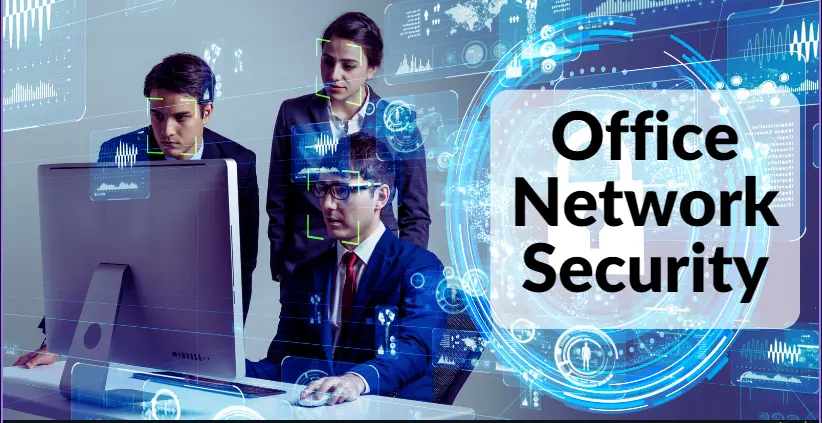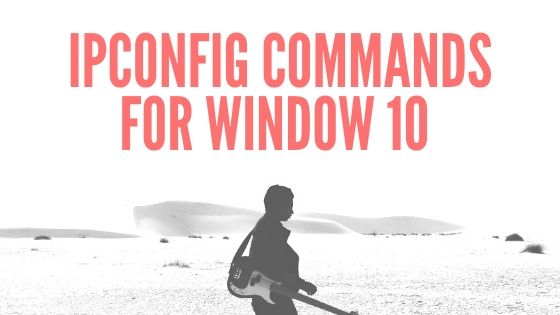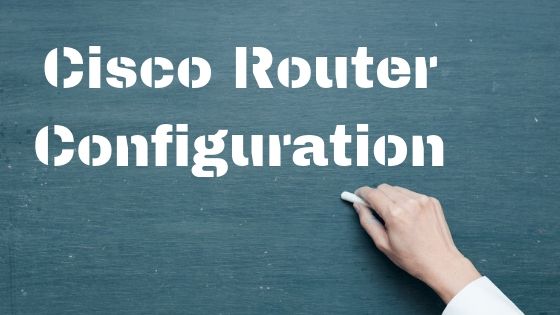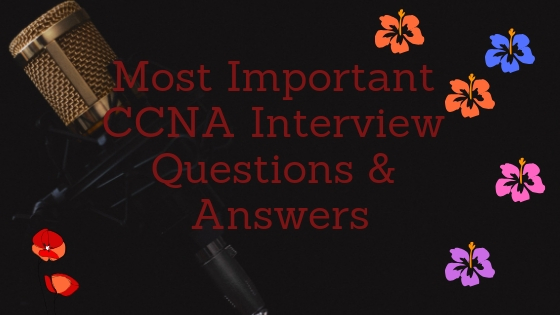
Most Important CCNA Interview Questions & Answers
This the collection of Most Important CCNA Interview Questions & Answers for Beginner Professionals. These are super best for New Network Engineers. These CCNA Interview Questions are collected from different network professionals who appear in different interview for CCNA level jobs. If you prepared following questions i am sure you can easily clear any entry level Job interview. You also request to include you Interview experience in comments for improving this article.
Which is the best Routing Protocol?
You can choose the different Routing protocols for your network. There are attributes of routing protocols, you need to consider these need to match it according to your network requirement. These are attributes
- Network Size
- Redundancy
- Amount of Traffic
- Metric (it may be hop count or bandwidth)
- VLSM support
You must have the exact idea of your required network. Following are some articles where you can determine the best routing protocol.

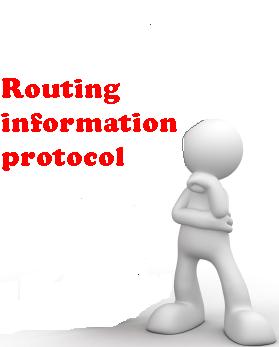
What is the router IOS and where it is stored on the Router?
Cisco Router IOS is software or operation system which is used for managing and operating the router. You can program the router by different commands. IOS are stored in Flash memory of the Router.
What are the different memories used in a CISCO router?
These are the following
- Flash Memory – Containing Cisco IOS.
- NVRAM (Non-volatile random-access memory) stores the startup configuration file
- DRAM stores the configuration file that is being executed
What are the sub-interfaces & loop-back interface ?
A sub-interface is a virtual-interface created by dividing 1 physical-interface in to multiple logical interfaces. In a Cisco Router a sub-interface uses the parent physical-interface for sending & receiving data. A loopback-interface is a logical, virtual interface in a Cisco Router
We have the 5 huawei Router with 250 RAM each, can we RUN EIGRP on these?
EIGRP is an Cisco propriety protocol and you cant run it on any other vendor router like huawei
What is the difference between routing and switching?
Router performs the packet switching and it is the layer 3 device and it forwards packets base on IP-address & considers making connection between the different networks. while switch is consider as a layer 2 device deals with the MAC address and it maintains a MAC table and forwards the packets base on MAC-address. Switch perform the circuit-switching and it is faster then the packet switching.
What is the difference between RIP & IGRP?
The big difference between the two routing protocols is the find the best path to a network or routing tables. RIP finds the best route to a network base on the number of hops . While, IGRP determined the best path base on different factors like bandwidth, reliability, MTU and hop count.
What is the routing table?
In a router the routing table is the list of the best routes or path to all knows routing. Router creates these best path by using the routing protocols.
What are the crossover and straight cables?
Same group device at same OSI layer can be connected through Cross Cable . To connect devices on different OSI layer we will use Straight Cable. e.g. If we want to connect one PC to another PC we will use Cross Cable and connect one PC to switch we will use straight cable.

which cable type is used for directly accessing a Router?
You can access it through console cable.
What are the Administrative Distance for different routing protocols like RIP, EIGRP BGP etc?
| IP Route | Administrative Distance |
| Connected interface | 0 |
| Static route directed to a connected interface | 1 |
| Static route directed to an IP address | 1 |
| EIGRP summary route | 5 |
| External BGP route | 20 |
| Internal EIGRP route | 90 |
| IGRP route | 100 |
| OSPF route | 110 |
| IS-IS route | 115 |
| RIP route | 120 |
Unicast, Multicast, Broadcast and Any-cast?
These are the different communication method.
- Uni-cast–One-to-One communication
- Multicast–One to many Communication
- Anycast–One to nearest Communication
- Broadcasting–One to All
What is STP and RSTP?
STP is a Cisco proprietary switching protocol that prevents loops when switches are connected with each other via multiple links for redundancy purpose. STP eliminate the loops in network by shutting down the extra port. RTP is advance version of Rapid spanning tree protocol which provides you faster spanning tree convergence after a topology-change.
What is ACL and what are the different types of access lists?
ACL access control list is used to assign different permissions for example deny or permit to an IP (s). There are two main types of ACL
- Standard ACL
- Extened ACL
Why we Use NAT?
NAT is a protocol used for mapping the public IP(s) on private-IPs and vice versa. We know that our private IPs are not able to route the data over the internet, for internet-traffic we need public IP addresses. With NAT we can map private IPs on the single or multiple public IPs, In this way a user having private IP on LAN can send his request over the internet.
What are CSMA/CD & CSMA/CA?
CSMA/CD (Carrier Sense Multiple Access With Collision Detection) is a media access control method used in LAN using early Ethernet-technology to over-come the collision. In CSMA/CD when every device wait for a free medium before using the media for transmission. While CSMA/CA )Carrier sense multiple access with collision avoidance) and used in wireless network to avoid collision.
What is the MAC?
All devices in a network have a MAC address. Communications at the layer 2 is done by unique identifier assigned to each NIC.
Difference between the IP and the MAC Address?
MAC address is the permanent or unique identifier address of any device for layer two communication. Where as the IP address is the logical address assigned to network devices for layer three communication.
Which command will you use to check the IP configuration of all interface on a Router?
You can use the Cisco command “Show ip interface brief” for the checking the interfaces status.
How to check the routing table on Cisco Router?
You will use the command “Show IP route”.
What are the different types of interface on a router ?
The most common interfaces types on a CISco router is as following:
- Ethernet/Fast Ethernet/igabit Ethernet: Ethernet use the Ethernet IEEE 802.3 standard based physical interface, 10 to 1000 Mbps speed.
- Serial Interface: These interfaces used for WAN connections like ISP connectivity such as Frame Relay, T1, etc
- Console Port: Configuration & management of router can be done through console port.
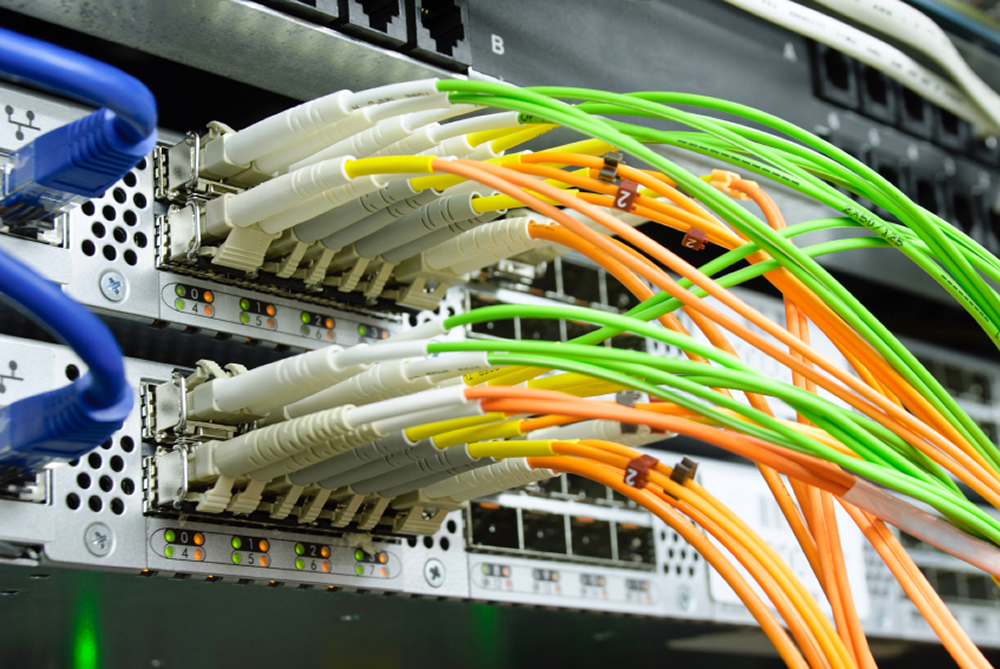
What are OSI layers, please name all?
OSI model have the following layers:
- Application layer
- Presentation layer
- Session layer
- Transport layer
- Network layer
- Data link layer
- Physical layer
On which OSI layer router and switch are working?
Router is layer3 and switch is layer3 device.
What are full-duplex and half-duplex.
In full duplex, both devices sender and receiver can communicate simultaneously, i.e. both can be transmitting and receiving at the same time. But In case of half duplex, a device cannot receive while it is transmitting & vice versa.
What is the telnet?
You can access the network devices remotely with Telnet protocol. using a virtual terminal connection you can create a bidirectional, interactive text-oriented communication. You can use it on on the Internet or local area network. Also check what is SSH
Name some WAN Protocols?
- ATM
- Frame Relay
- Point-to-Point Protocol
What is a Frame Relay?
Frame Relay is a WAN protocol that provides connection oriented communication by making the virtual circuits. It has a high-performance rating and operates at the Data-Link and Physical-Layers of OSI.
What is ARP?
Address resolution protocol (ARP) provide the IP address against a MAC address when packets or frames wants to move from layer-2 to laye-3.
What is Route Poisoning?
Route Poisoning is the process of inserting a table entry of 16 to a route, making it unreachable.
Which types of passwords you can used for securing a CISCO router?
You can secure your router with the following passwords:
- enable secret (Block user for changing the configuration)
- virtual terminal (For enabling Telnet password for remote access)
- console Password (For securing physical access)
- Auxiliary password
How to delete start-up configuration or NVRAM?
You can use the command erase startup-config on Cisco Router for deleting the configuration stored in NVRAM.
Size of IPv6 address?
Size of IPv6 address is 128 bit. You can learn more about IPV6.
How hub, switch and router transfer the packets, differentiate it?
What is Hub:
hub is collision domain and broadcast device. It mean that it will sent out the data to all others ports. Other drawback is that only one device can send or receive data at a time.
What is Switch:
Switch is multiple collision-domains and single broadcast domain. The Switches maintained the MAC tables and forward the data on exact port instead of broadcast. Also multiple port can send and receive packets at a time. Switches normally used for LAN.
What is Router:
Router created the routing table for forwarding the IP packets. Routing tables have the short path for each networks. Router normally connect different network with each other.
Why we use VLANs.
VLANs allow the creation of collision domains by groups other than just physical location. Using VLANs, it is possible to establish networks by different means, such as by function, type of hardware, protocol, among others.
What are IP address Classes and their ranges?
IP address Classes and their ranges are as following:
- Class A : 10.0.0.0–10.0.0.255
- B : 172.16.0.0–172.31.0.0
- C : 192.168.0.0–192.168.0.255
What is the difference between half duplex and full duplex?
In Full-duplex the communication can occur in both directions at the same time, on the other hand in half duplex the on side communication is possible at a time.
What is the difference between TCP and UDP?
You can send data across computer networks using TCP/UDP. TCP is considered as a connection-oriented protocol. It means that to before sending the data to other side, it will create a connection . While UDP is the connection-less protocol. It mean s you can send data without creating connection, but there is no guarantee whether your transferred message will reach there without any leakage.
How many ways to access a Cisco router?
You can access a Cisco Router in the following ways:
- By Telnet (A remote way to access the router)
- AUX (remote way with a Telephone line)
- Console (Physical access through Cable)
What are K-values or matric for EIGRP protocol?
- Load
- Delay
- Bandwidth
- Reliability
- MTU
What is the difference between FTP and TFTP?
You can visit here for difference between FTP and TFTP.
Why we use ping?
Ping “Packet Internet Groper” is a utility used to test network’s connectivity.
What is Local Area Network?
You can learn about the “What is Local Area Network”
Thank you for visiting this article that is “most important CCNA interview questions”. I have included the CCNA interview questions base on my experience. You can also add the questions you faced in your interview in the commend section. I will update this article with your comments, and this will help and and provide the an informative and helpful CCNA interview questions. Thanks. OSPF is one the important concept which will be tested in network job interview :Networking Interview Questions and Answer








